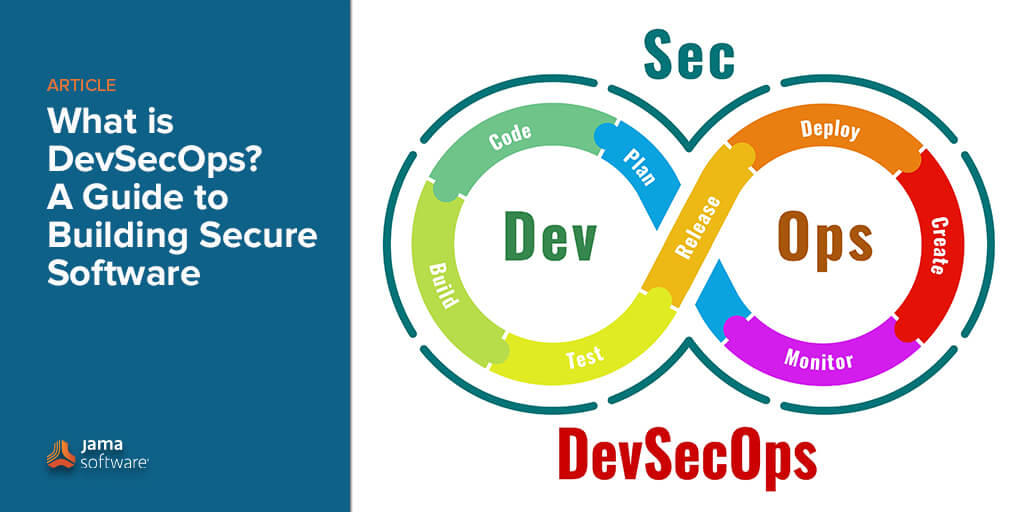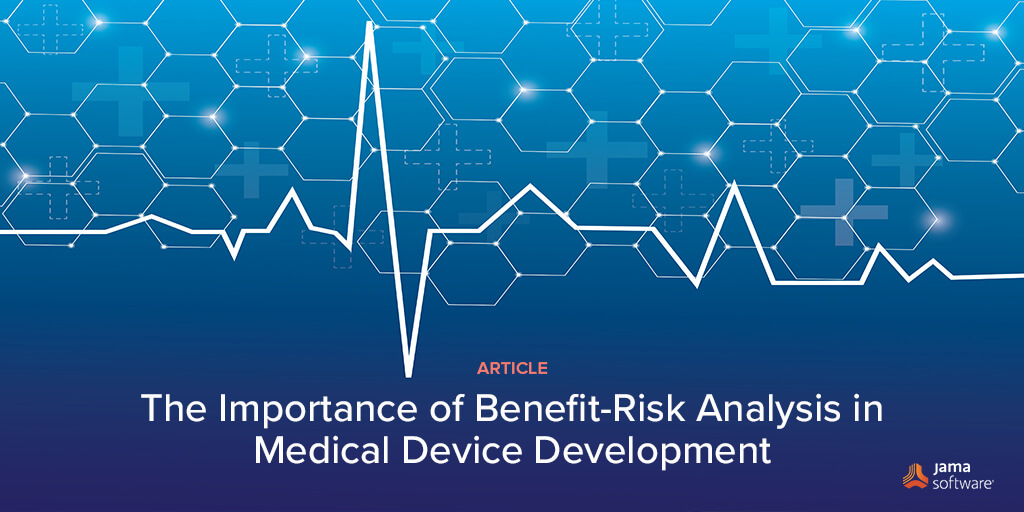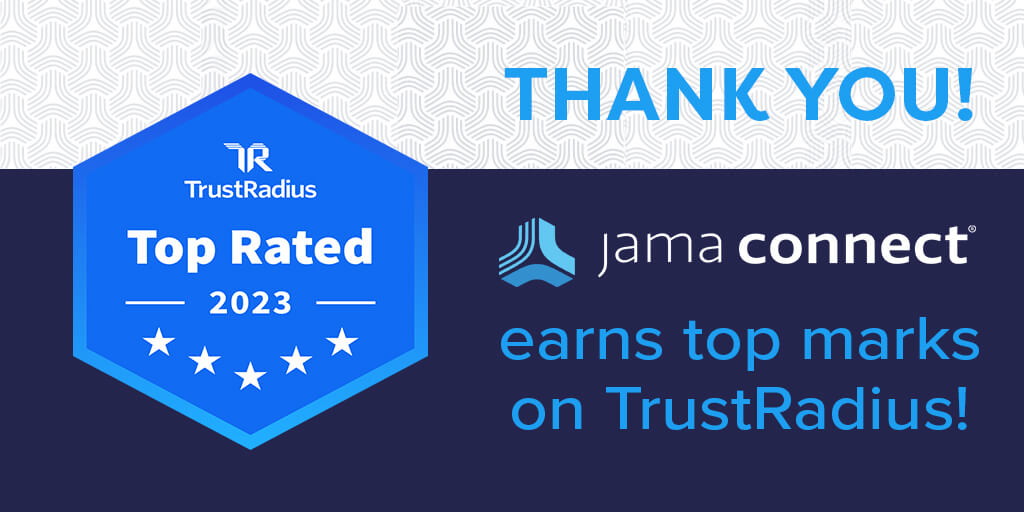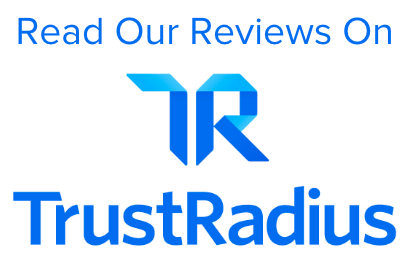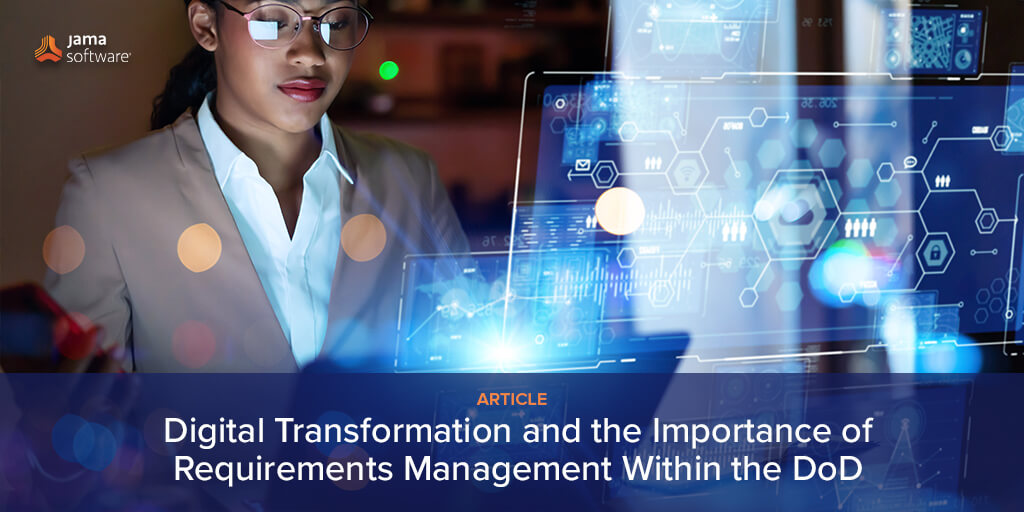
In this blog series, we’ll recap the “Six Key Challenges in the Architecture, Engineering, Construction, and Operations (AECO) Industry and How to Solve Them with Jama Connect®” whitepaper. To read part 1 of this two-part series, click HERE.
Solving Key Challenges in the Architecture, Engineering, Construction, and Operations (AECO) Industry with Jama Connect®: Part 2
Six Key Challenges in the Architecture, Engineering, Construction, and Operations (AECO) Industry and How to Solve Them with Jama Connect®
Six Key AECO Challenges Continued…
CHALLENGE #4 – Inability to Track and Manage Owner Changes
The AECO industry is a complex and dynamic industry that involves many stakeholders and moving parts. One critical aspect of managing AECO projects is conducting change impact analysis, which involves evaluating the potential effects of proposed changes to a project’s design, scope, schedule, and cost. The inability to effectively track and manage change can lead to significant negative impacts on project outcomes.
For example, without a proper analysis, changes may be implemented without understanding their full downstream consequences, resulting in unexpected delays, cost overruns, safety hazards, and quality issues. Furthermore, failing to conduct a change impact analysis can undermine project team collaboration, trust, and communication, leading to increased conflicts and disputes. Therefore, incorporating change impact analysis into AECO projects is crucial for ensuring project success and minimizing risks.
A real-world example might be: One contractor decides to make a window larger. This change might impact the structure of the building, air conditioning needs, electrical placement, the roof, and even violate building codes. While a simple change like this may seem insignificant, it will often have ripple effects throughout the development process. Without proper visibility, collaboration, and consideration, this can result in rework, delays, and increased costs across the board.
Jama Connect is a powerful tool that can help the AECO industry effectively manage change by providing a centralized platform for capturing, tracking, and analyzing changes across the end-to-end project development lifecycle. Jama Connect’s change management capabilities enable project teams to quickly assess the impact of proposed changes and make informed decisions about their implementation. With Jama Connect, project teams can easily collaborate and communicate about change requests, ensuring that all stakeholders are aware of the potential impacts and can provide input. Additionally, Jama Connect provides real-time visibility into the status of changes, allowing project teams to proactively identify and address any issues that arise. This level of transparency and control helps to reduce the risk of errors and delays, ensuring that projects are delivered on time and within budget. Overall, Jama Connect is an essential tool for the AECO industry to effectively manage change and ensure project success.
RELATED: Best Practices Guide for Writing Requirements
CHALLENGE #5 – Inefficient Design Review Process
In the AECO industry, design review processes are critical to ensure the quality and compliance of construction plans. However, inefficient design review processes can lead to significant delays, cost overruns, and mistakes in the final product. One common issue is the lack of clear communication and coordination between different stakeholders, such as architects, engineers, contractors, and clients. This can result in conflicting feedback, revisions, and approvals that prolong the design review process. Additionally, outdated or manual review methods, such as paper-based markups and physical meetings, can further slow down the process and increase the likelihood of errors. Overall, improving the efficiency of design review processes in the AECO industry requires better collaboration tools, streamlined workflows, and clear communication channels.
Jama Connect can play a significant role in streamlining the design review (and design verification) process in the AECO industry by enabling collaboration, improving communication, and reducing errors. It is required that engineering firms provide specific validation of how their proposed design meets the original owner’s requirements, and with Jama Connect, that process is simple.
Here are some specific ways Jama Connect can help with the design review process:
- Centralized platform for design review: Jama Connect provides a centralized platform for design review, allowing all stakeholders to access the latest designs, review comments, and feedback in real-time. This eliminates the need for stakeholders to send design documents back and forth via email, which can be time-consuming and result in errors.
- Collaborative review process: Jama Connect enables collaboration between all stakeholders during the design review process and documents the history of every change, who made it, and why. Stakeholders can provide feedback and comments on designs, and other stakeholders can respond to those comments, creating a collaborative feedback loop. The ability to trace designs back to the original requirements is a key component of moving smoothly through the design process, and with Live Traceability™ within Jama Connect, this traceability is automatically created as you go through the design and review process and gives an owner a complete record for their project. This helps to ensure that all stakeholders are on the same page, reducing errors and misunderstandings.
- Version control and tracking: Jama Connect provides version control and tracking features that allow stakeholders to see the history of design changes, track who made each change, and ensure that everyone is working with the latest version of the design. This helps to avoid errors that can occur when stakeholders work with outdated or incorrect design documents.
- Approval workflows: Jama Connect allows organizations to define and enforce approval workflows for design reviews. This ensures that designs are reviewed and approved by the appropriate stakeholders before being finalized, reducing the risk of errors and ensuring compliance with industry standards and regulations.
- Reporting and analytics: Jama Connect provides reporting and analytics features that allow organizations to track the progress of design reviews, identify bottlenecks, and analyze review data. This helps organizations to continuously improve their design review process, reducing errors and improving efficiency over time.
AECO Projects Must Move Quickly While Balancing Budget and Quality:
Learn More: Buyer’s Guide- Selecting a Requirements Management and Traceability Solution eBook
CHALLENGE #6 – Lack of Accountability
Accountability is essential in the AECO industry, as it ensures that all stakeholders are responsible for their actions and decisions. This includes ensuring that project requirements are met, timelines are followed, and budgets are managed effectively.
Jama Connect can help solve this challenge by providing a platform for managing project requirements. This includes defining responsibilities and tracking progress against milestones. This helps ensure that all stakeholders are accountable for their actions and decisions.
Conclusion
In conclusion, while the AECO industry is facing many unique challenges, there is also an opportunity for process improvement that will allow stakeholders to reduce delays, project risk, and overspending. Jama Connect can help facilitate collaboration, prevent scope creep, reuse requirements, designs, knowledge, and components, and improve the design review process. By leveraging Jama Connect, AECO organizations can overcome many of the challenges they face and meet the evolving needs of clients and society while navigating a rapidly changing business landscape.
Click HERE for part 1 of this series and HERE to download the entire whitepaper,
“Six Key Challenges in the Architecture, Engineering, Construction, and Operations (AECO) Industry and How to Solve Them with Jama Connect®“
Want to Get Your Budget Back and Simplify Your AECO Projects?
Get Started By Trying Out Our Award-Winning Requirements Management Software Platform!


